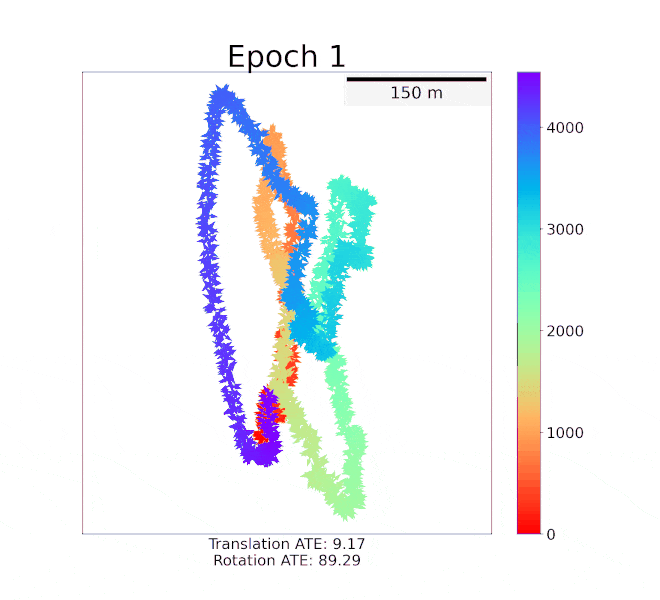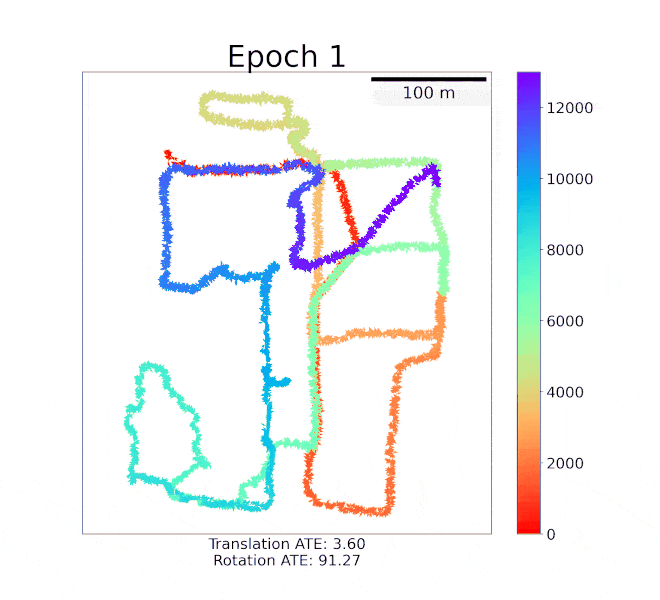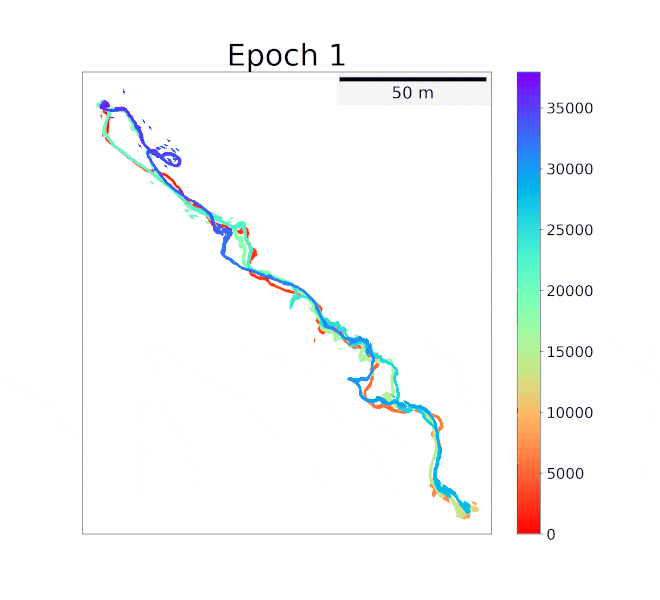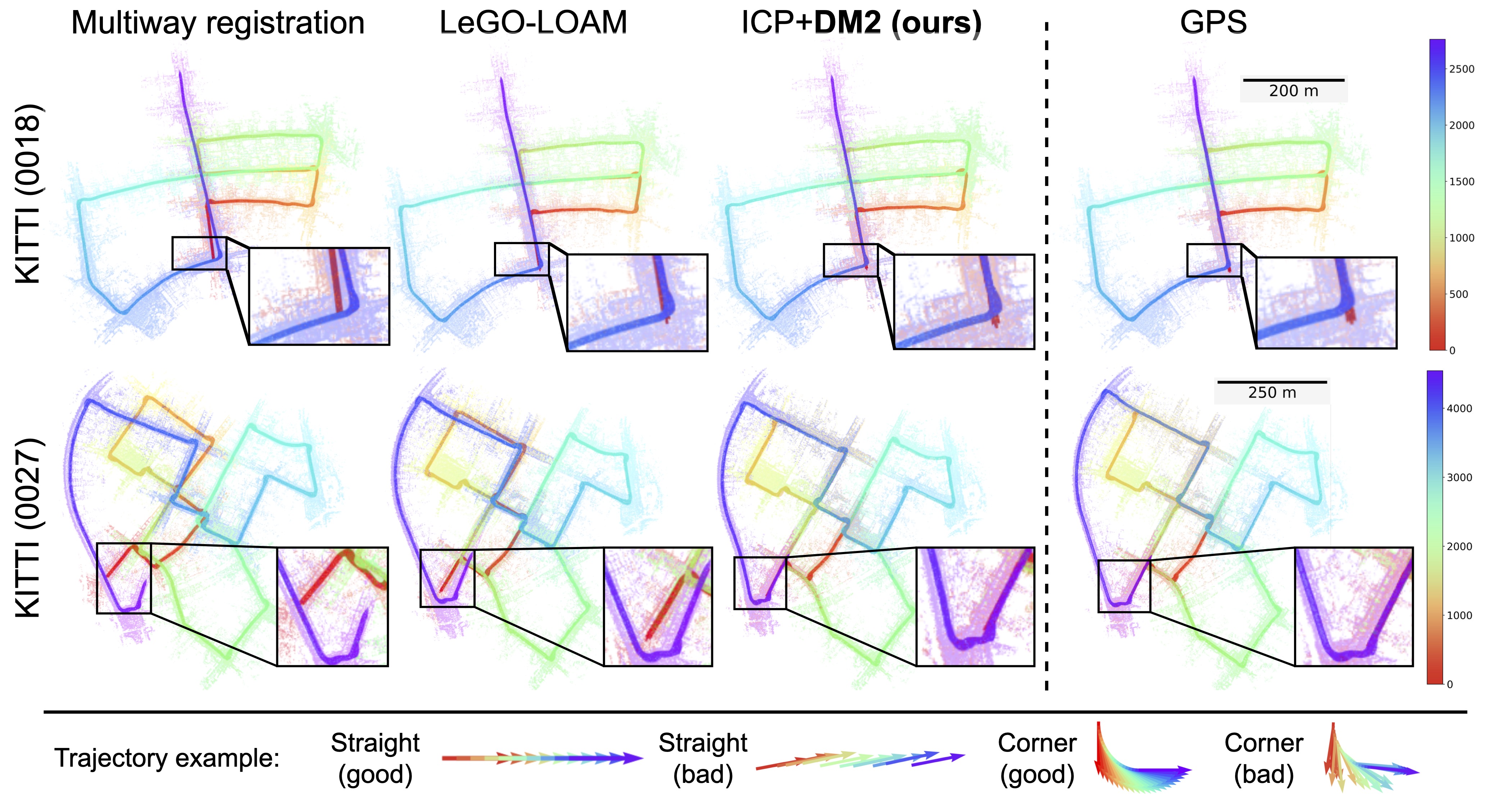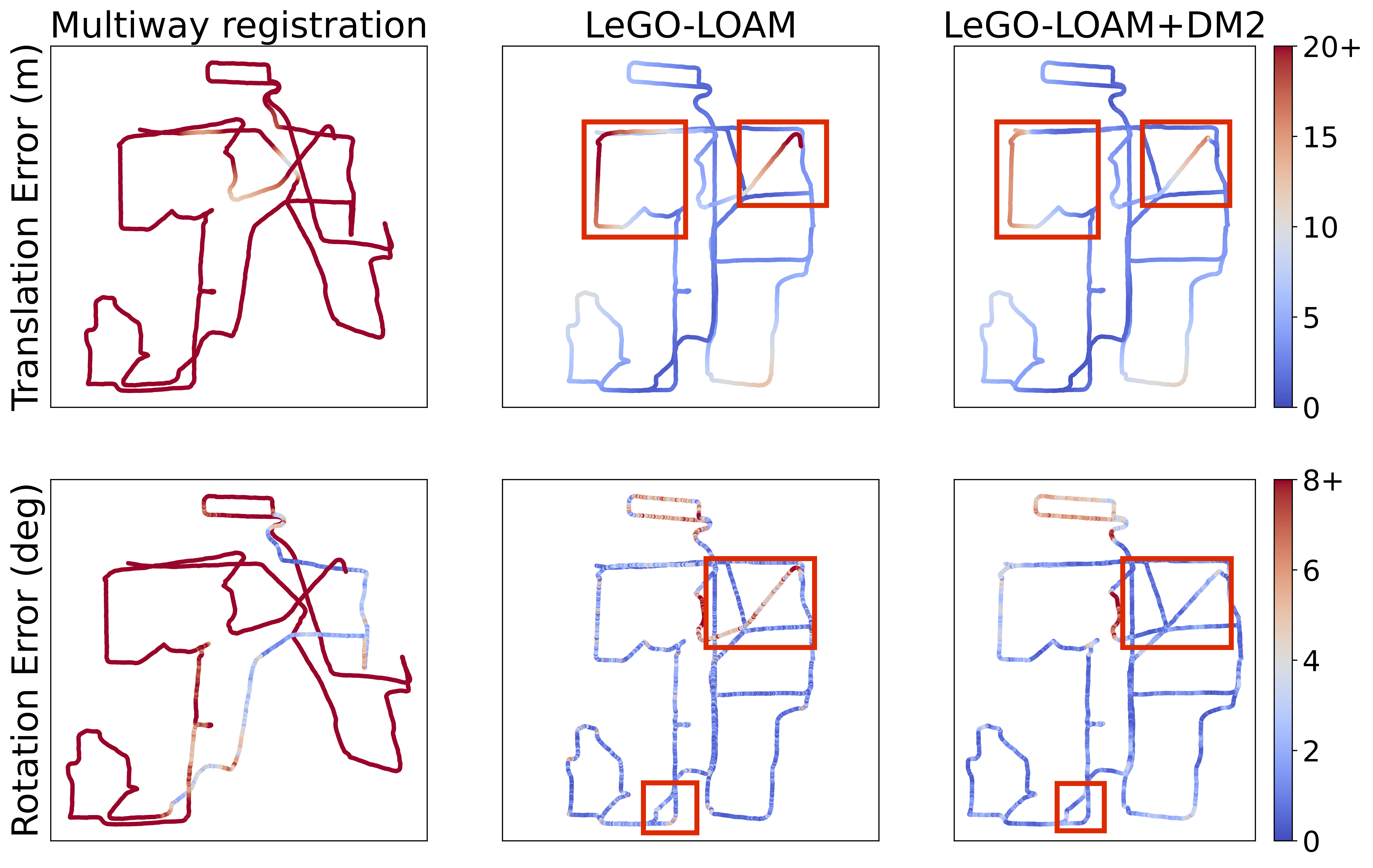LiDAR mapping is important yet challenging in self-driving and mobile robotics.
To tackle such a global point cloud registration problem, DeepMapping converts the complex map estimation into a self-supervised training of simple deep networks.
Despite its broad convergence range on small datasets, DeepMapping still cannot produce satisfactory results on large-scale datasets with thousands of frames. This is due to the lack of loop closures and exact cross-frame point correspondences, and the slow convergence of its global localization network.
We propose DeepMapping2 by adding two novel techniques to address these issues:
organization of training batch based on map topology from loop closing
self-supervised local-to-global point consistency loss leveraging pairwise registration.
Our experiments and ablation studies on public datasets (KITTI, NCLT, and Nebula) demonstrate the effectiveness of our method. Our code will be released.

